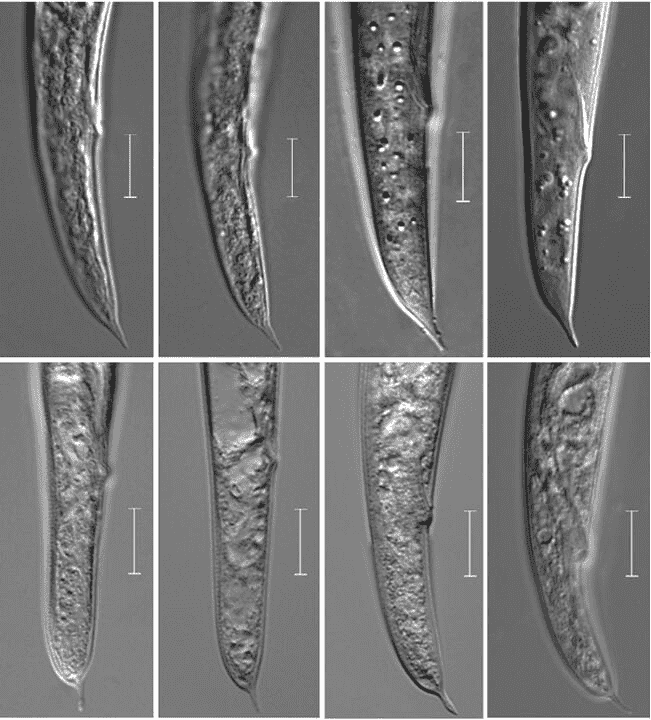Scientific classification
Kingdom:Animalia
Phylum:Nematoda
Class:Secernentea
Subclass:Tylenchia
Order:Aphelenchida
Superfamily:Aphelenchoidoidea
Family:Parasitaphelench
Subfamily:Bursaphelenchinae
Genus:Bursaphelenchus
Species:B. mucronatus
Binomial name:Bursaphelenchus mucronatus

Introduction
In 1979, Bursaphelenchus mucronatus was first isolated from dead wood by Japanese scholar Mamiya et al. It belongs to the genus aphelenchoideae of secernentea, aphelenchida and aphelenchoideae Bursaphe-lenchus。 It has six labial lobes and a clear boundary between the head and the body. The mouth needle is slender and the base is slightly expanded. The dorsal oesophageal gland opens in the middle esophageal bulb. The middle oesophageal bulb is developed and oval, accounting for more than 2 / 3 of the body width. The position of the excretory orifice is roughly parallel to the junction of the oesophagus and the intestine. The female has one ovary, which extends forward, and the pudendal opening is located in the insect In the middle and posterior part of the body, 73% of the body length is covered with the pudendal cap, and the gonad single tube extends forward; the male has large commissural spines, curved into an arch, with blunt base and top, obvious coracoid process, and the distal end of the commissural spines is enlarged without a guide band. According to the differences in morphology and molecular biology, Bursaphelenchus mucronatus can be divided into two geographical types: East Asian type and European type. Many scholars have confirmed this view. Recently, Braasch has used ITS-RFLP, ITS1 / 2, lsud2 / D3 and mitochondrial COI sequencing The results showed that the European type and the Asian type were actually two subspecies, the European type was Kerim subspecies, and the Asian type was the subspecies. The genetic distance between the two subspecies was smaller than that between different nematode species, but larger than that between different nematode strains within the subspecies.
Pathogenicity of Bursaphelenchus mucronatus
Bursaphelenchus mucronatus originated from Eurasia and widely distributed in the northern hemisphere, including China, Finland, France, Germany, Japan, South Korea, Russia and Sweden. Bursaphelenchus xylophilus does not cause serious damage to pine forests in many areas, similar to the pine wood nematode in the United States.
